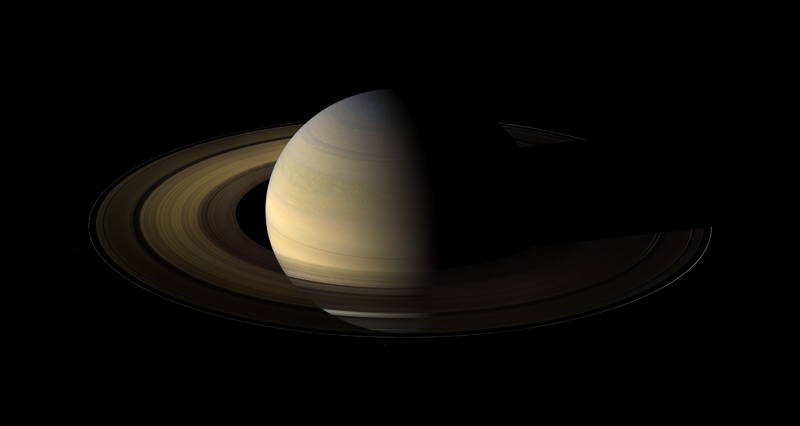Surprising, Huge Peaks Discovered in Saturn's Rings

Stunningnew views of Saturn from a NASA spacecraft have revealed odd formations in theplanet's trademark rings, including ripples as tall as the Rocky Mountains.
The newimages taken by NASA?s Cassini spacecraft show that Saturn?s icy rings -once thought to be relatively thin - can be miles thick in some points andinclude weird, bright streaks from clouds kicked up by the cosmic clash betweenring particles and interloping space debris.
"It'slike putting on 3-D glasses and seeing the third dimension for the firsttime," said Bob Pappalardo, Cassini's project scientist at NASA's JetPropulsion Laboratory in Pasadena, Calif., in a statement. "This is amongthe most important events Cassinihas shown us."
Cassinirecorded the new images of Saturn in the week surrounding the planet?s Aug. 11 equinox, a time when its bright bands of rings are edgeon to the sun and nearly invisible as seen from Earth.
The raresight only occurs twice during Saturn?s long orbit, which takes nearly 30 yearsto complete. Earth also has two equinoxes a year (vernal and autumnal), withthe autumnal equinox to occur Tuesday.
Saturn?srings are made up of individual chunks of ice that reach out nearly 85,000 miles(140,000 km) from the center of the planet. In some spots they are only 30feet (about 10 meters) thick, while others can reach towering heights, thenew images revealed.
The unique lighting conditions brought on by Saturn?sequinox and the sun illuminated the odd ripples and bumps among the planet?srings, whichCassini spied with its camera eyes. The staggering heights of someformations could be discerned by the shadows they cast, researchers said.
Breaking space news, the latest updates on rocket launches, skywatching events and more!
"Wethought the plane of the rings was no taller than two stories of a modern-daybuilding and instead we've come across walls more than 2 miles [3 kilometers]high," said Cassini imaging team leader Carolyn Porco at the Space ScienceInstitute in Boulder, Colo. "Isn't that the most outrageous thing you couldimagine? It truly is like something out of science fiction."
One ripplerises nearly 2 1/2 miles (4 km) above the plane of Saturn?s rings. The big blipis caused by the gravitational tug of the planet?s moon Daphnis. It is thehighest peak among the rings, mission managers said.
Scientistsestimate that there are about 35 trillion-trillion tons of ice, dust and rock locked upin Saturn?s rings. Cassini has been studying Saturn and its rings since it arrivedat the planet in 2004 and is currently in the middle of an extended missionto observe the gas giant?s equinox period.
"Tounderstand what we are seeing will take more time, but the images and data willhelp develop a more complete understanding of how old the rings might be andhow they are evolving," said Linda Spilker, Cassini?s deputy projectscientist at JPL.
- Video - Rare Views of Saturn's Eclipsing Rings and Moons
- Video - Cassini at Saturn: 4 Years of Discovery
- Cassini's Greatest Hits: Images of Saturn
Join our Space Forums to keep talking space on the latest missions, night sky and more! And if you have a news tip, correction or comment, let us know at: community@space.com.

Space.com is the premier source of space exploration, innovation and astronomy news, chronicling (and celebrating) humanity's ongoing expansion across the final frontier. Originally founded in 1999, Space.com is, and always has been, the passion of writers and editors who are space fans and also trained journalists. Our current news team consists of Editor-in-Chief Tariq Malik; Editor Hanneke Weitering, Senior Space Writer Mike Wall; Senior Writer Meghan Bartels; Senior Writer Chelsea Gohd, Senior Writer Tereza Pultarova and Staff Writer Alexander Cox, focusing on e-commerce. Senior Producer Steve Spaleta oversees our space videos, with Diana Whitcroft as our Social Media Editor.
